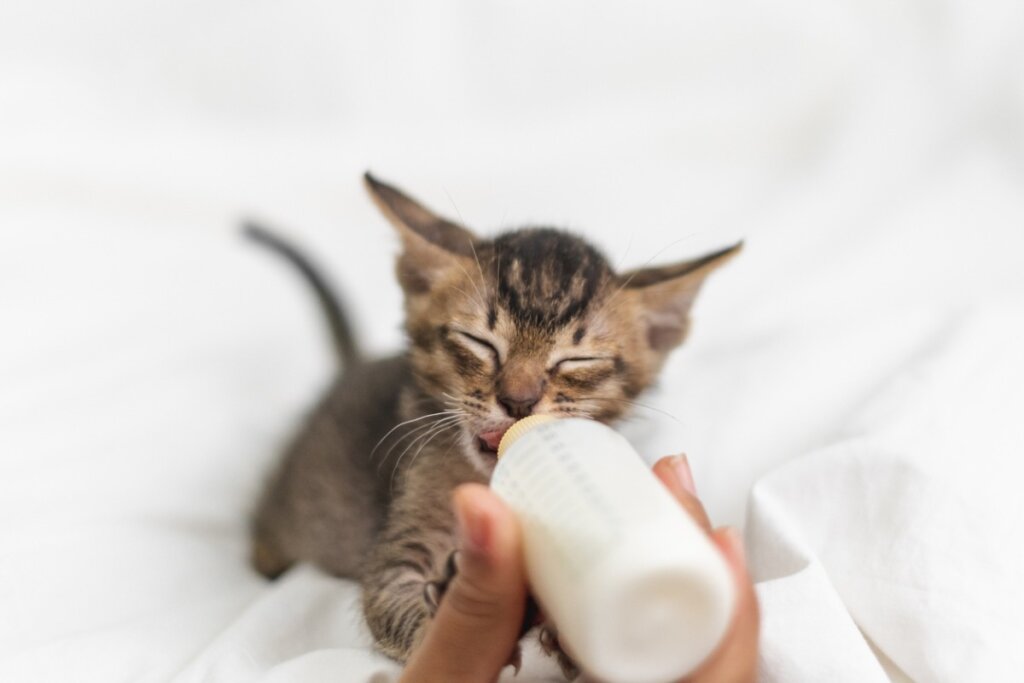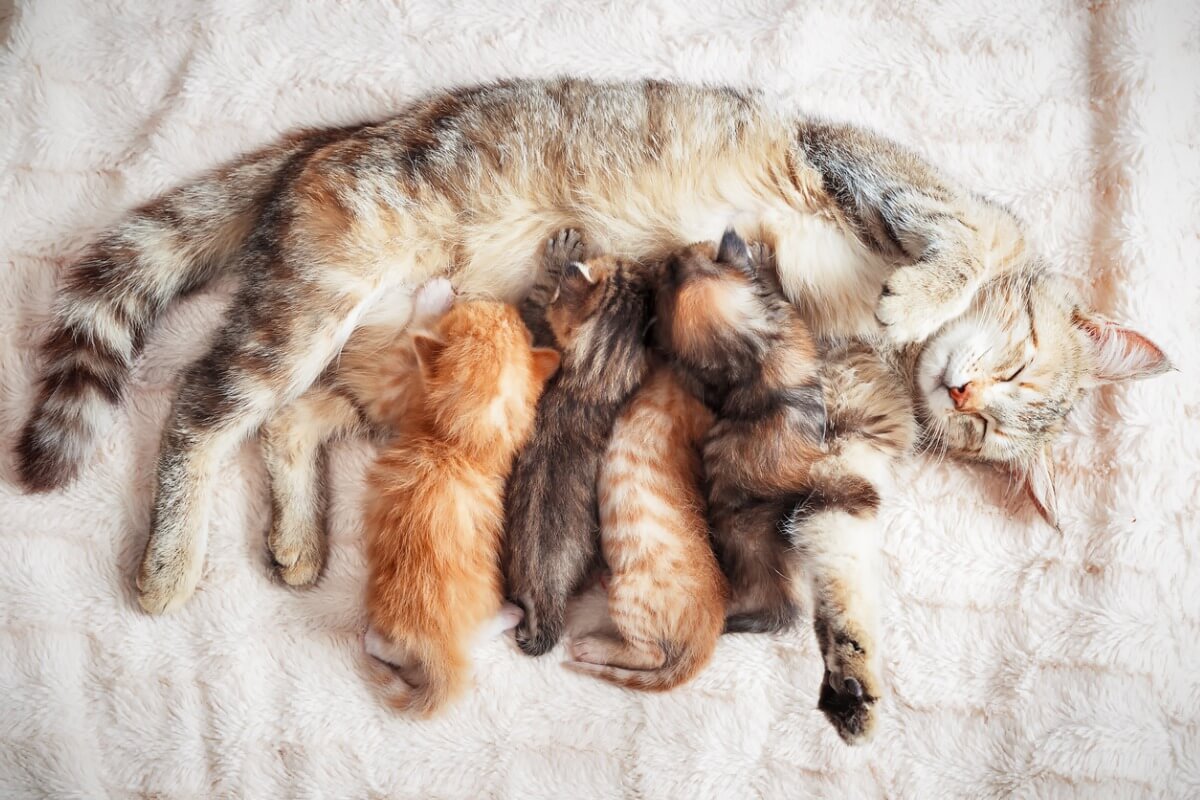How to Feed a Newborn Cat

During the cat birth season – in the spring and summer – it isn’t uncommon to come across a litter or solitary kitten. In addition, if cats are raised at home, the mother may reject one of the members of the litter. In this situation, you have to know how to act and what the best way is to feed a newborn cat.
However, before getting down to business with eating, there are other factors that must be taken into account. In the following lines, you’ll learn how to feed a cat less than 4 weeks old and other important tips on the subject.
What to do if you find a kitten
As the cats get older, the mother changes the location of the litter either for safety or because the shelter has become too small. During this transfer, one of the kittens may get left behind, but that doesn’t mean that the mother won’t return.
For this reason, if a person comes across a lonely and helpless specimen, it’s a good idea to watch it from a distance in case the mother returns. If the hours pass and there’s no sign of the cat, there should be no problem taking the cat to a veterinary clinic.
The veterinarian will make a first examination of the patient to determine its age and general health. In addition, they can offer good advice and guidance on how to feed a newborn cat.
In the same way, if, instead of finding a single cat, a person finds an entire litter, then it’s better to wait for the mother. If she returns and you still want to rescue the cats, the mother must go with them to an animal protection center, so that all members of the family can find a stable home.
Once you know that the cat hasn’t got any serious conditions and has good general health, then it’s time to go home and start taking care of it.

Feeding a newborn cat
Like all baby mammals, kittens need to drink milk. However, not just any milk is suitable for all animals; ideally, it needs to be the milk from that particular species, preferably the mother’s.
When this isn’t possible, breast milk should be substituted for a milk that’s specially formulated for this species. Protein, fat, and sugar content varies greatly between species, and so what’s good for some can be deadly for others.
Under no circumstances can an animal under 3 weeks of age eat any other type of food other than breast milk or formula milk. Similarly, the canned liquid milk formula that’s sold for adult cats isn’t suitable.
Replacement formula milk
When purchasing milk for newborn cats, you should look for powdered formula that can be used to replace breast milk. In addition, it’s absolutely necessary to use a bottle for felines: the use of syringes or other methods can cause aspiration pneumonia, as it won’t be the animal that absorbs when considered.
The replacement milk powder formula is indicated to feed newborn kittens and avoid dangerous diarrhea. Also, it’s very important not to use powdered milk that has passed its expiration date. If the smell isn’t sweet when opening the bottle, it’s better not to use it.
Feeding a newborn cat
In general, it’s normal for the feline to reject the milk and the bottle, especially if it’s used to the mother’s milk. Despite this, you shouldn’t give up; keep trying to offer the food to the kitten, while rubbing its mouth with the nipple of the bottle. To feed a newborn feline, you must follow a few very simple steps:
- Prepare the formula: In principle, the instructions established by the milk manufacturer should be followed. Typically, this process consists of diluting a quantity of powder in warm water, as 2 or 3 degrees above room temperature will suffice. Before offering the milk to the animal, you should its temperature on your wrist.
- Position the young: The cat can’t be fed in just any position. It should always be lying on its stomach, with its head slightly tilted up. It’s better to lay the animal on a towel and offer it the bottle.
- Once it has eaten, it will try to defecate and urinate. With 2 fingers, you can gently caress the cat’s belly with circular movements in a clockwise direction. After that, with a small towel moistened with hot water, the genital area will be stimulated to activate the urination reflex, as well as defecation.
- When finished, all the objects used should be washed well and left ready for the next feeding.
Young under 4 weeks of age should eat every 3 hours and, in addition, each one should defecate and urinate after feeding. If the kitten doesn’t defecate after the stimulation, you should go to the vet as soon as possible.

A great responsibility
Finally, each day you should weigh the kitten and record its weight. This is the only way to know if it’s being nourished properly. In the event of any doubt or sign of discomfort in the animal, you should urgently go to the vet. Remember that newborn felines can easily become dehydrated, which could be fatal.
Having baby felines in the home can be a real joy, but it’s also a great responsibility. Don’t forget that the life of a sentient being is in your hands, so don’t skimp on expense and attention if things get difficult.
All cited sources were thoroughly reviewed by our team to ensure their quality, reliability, currency, and validity. The bibliography of this article was considered reliable and of academic or scientific accuracy.
- OOTC. (May, 2013). What to Do (and NOT Do) If You Find a Newborn Kitten. Animal alliance nyc. Disponible en: http://www.animalalliancenyc.org/wordpress/2013/05/what-to-do-and-not-do-if-you-find-a-newborn-kitten/
- WebMD. (2021). How Do I Feed a Newborn Kitten? FETCH. Disponible en: https://pets.webmd.com/cats/guide/newborn-kitten-care#1
